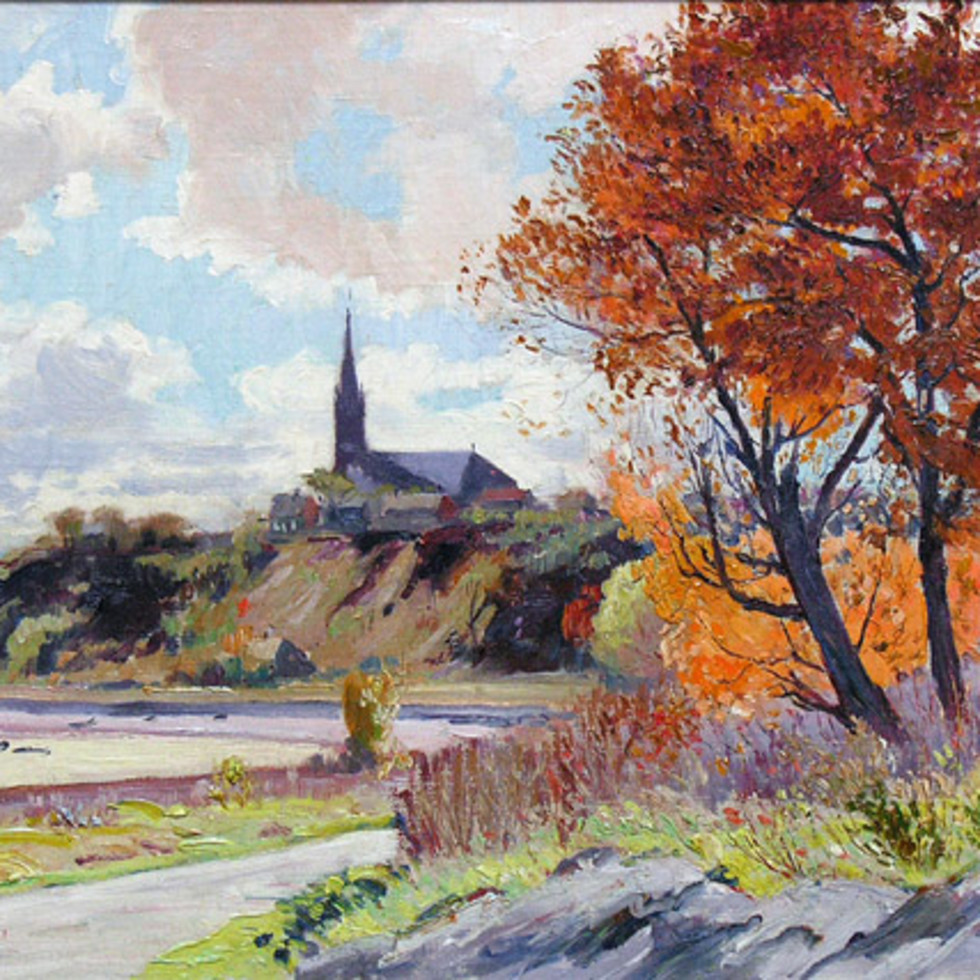Alfred Laliberté
 "Laliberté worked for the most part on the monumental scale and will be remembered best for his work in this field, but, scattered about the world, recognized as fine work, are many of his portrait busts, medallions and medals… Quebec is rich in artists who pursue the historical tradition. Alfred Laliberté was not the least of these."
From The Montreal Star, 14 January 1953
"Laliberté worked for the most part on the monumental scale and will be remembered best for his work in this field, but, scattered about the world, recognized as fine work, are many of his portrait busts, medallions and medals… Quebec is rich in artists who pursue the historical tradition. Alfred Laliberté was not the least of these."
From The Montreal Star, 14 January 1953
Alfred Laliberté was born in Sainte-Élisabeth-de-Warwick, Quebec in the Arthabaska municipality. Laliberté was the son of Joseph Laliberté, a farmer, and Marie Richard. From an early age Laliberté began to learn the agricultural trade as he initially intended on working for the family business. At the age of 15 he began sculpting as a hobby. His fine work drew the attention of Sir Wilfrid Laurier, who encouraged Laliberté to enter the Conseil des arts et manufactures (CAM) in Montreal. It was largely through Laurier's attention that Laliberté earned his father's approval to enter CAM in 1896. In 1898 he won first prize at the Québec City Provincial Exhibition for his life-size sculpture of Laurier.
In 1902, Laliberté moved to Paris to study at the École nationale supérieure des beaux-arts at the age of 23. While in Paris, he became friends with fellow Québécois artist, painter Marc-Aurèle de Foy Suzor-Coté. After returning to Montreal, Laliberté began to produce work that displayed Parisian influence, particularly work inspired by French sculptor Auguste Rodin.
In 1922 Laliberté joined the faculty at École des beaux-arts de Montréal (now a part of the Université du Québec à Montréal). Laliberté co-founded the Sculptors Society of Canada in 1928 with Frances Loring, Florence Wyle, Elizabeth Wyn Wood, Wood's teacher and husband Emanuel Hahn and Henri Hébert. He was made a member of the Royal Canadian Academy of Arts.
Between 1928 and 1932 he produced 215 small bronze sculptures depicting legends, customs and rural activities of the past and present history of the pioneers of Canada. On June 22, 1940, he married Jeanne Lavallee. He died in Montreal in 1953 and is buried in the Notre Dame des Neiges Cemetery. He wrote three manuscripts about his life and works, Mes mémoires, Réflexions sur l'art et l'artiste, and Les artistes de mon temps, all of which were published together in 1978 under the title Mes souvenirs. His life's work includes more than 900 sculptures in bronze, marble, wood and plaster. Many of his sculptures depict national figures and events in Canada and France such as Louis Hebert, François-Xavier-Antoine Labelle, Adam Dollard des Ormeaux, and the Lower Canada Rebellion. Although he produced hundreds of paintings as well, he is chiefly remembered for his work as a sculptor.





